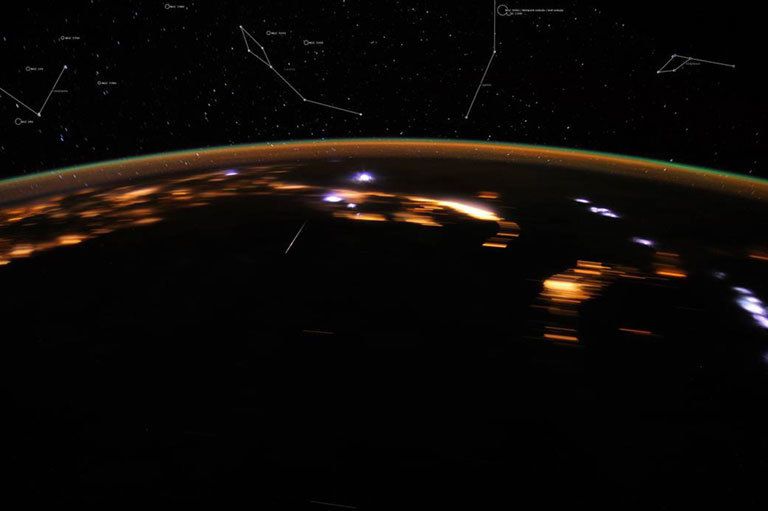
Tuesday marked the start of the Lyrid meteor shower that passes by Earth each year offering a dazzling view of shooting stars. It is nearly 3,000 years since people first caught a glimpse of the same meteor shower, with sightings reported in 687 B.C., according to NASA.
The shower begins each year on April 16 and continues to April 25 with the peak expected between April 22 and 23. In 2019, that peak is occurring around the same time of the month as the full moon which will make the shower more challenging to view.
Not only will the moon be full and bright, it will be close to the radiant, which can also make the meteors more difficult to see, as can the wet and cloudy weather expected during the peak days in many areas. The radiant is the part of the sky where the meteors appear to be coming from, not where they're actually coming from in space.
In the case of the Lyrids, the meteors look like they're coming from the constellation Lyra, meaning that Lyra is the radiant, i.e., where the meteors appear to radiate from. This is the key place for viewers to be aware of during the meteor shower. The shower starts only after the radiant rises in the sky so viewers should check when that is to know when to head out to stargaze.
To zero in on the constellation Lyra even more, viewers should look at Vega, the brightest star in the constellation. Once they see Vega, they'll know the meteor shower has likely started.
How to See the Lyrids Meteor Shower:
In order to have the greatest chance of seeing the meteors, people shouldn't actually look directly at Lyra. If they do, the meteors will appear to have short tails, but if viewers look at the sky as a whole, the meteors are more likely to appear long. Taking in the sky as a whole is a technique that helps viewers of any meteor shower, NASA recommends.
Sky watchers in the Northern Hemisphere will have the best chance of seeing the meteors after the moon goes down so it's darker but before the sun rises, if that's possible for them.
Viewers should go to a place away from light pollution and allow their eyes at least a half an hour to adjust to the dark. They should also try and lay down or sit with their head tilted back looking east and upward while taking in as much as they sky possible, said NASA.
What Causes the Lyrids?
The Lyrids come from the comet C/1861 G1 Thatcher. Each year, around the same time, Earth passes through the space debris left over in space by the comet and those pieces enter the Earth's atmosphere and burn up, creating the shooting stars viewers on Earth hope to see.
Uncommon Knowledge
Newsweek is committed to challenging conventional wisdom and finding connections in the search for common ground.
Newsweek is committed to challenging conventional wisdom and finding connections in the search for common ground.
About the writer
Nina was a breaking news reporter. She previously worked at Business Insider, The Boston Globe, and Boston.com.
To read how Newsweek uses AI as a newsroom tool, Click here.








